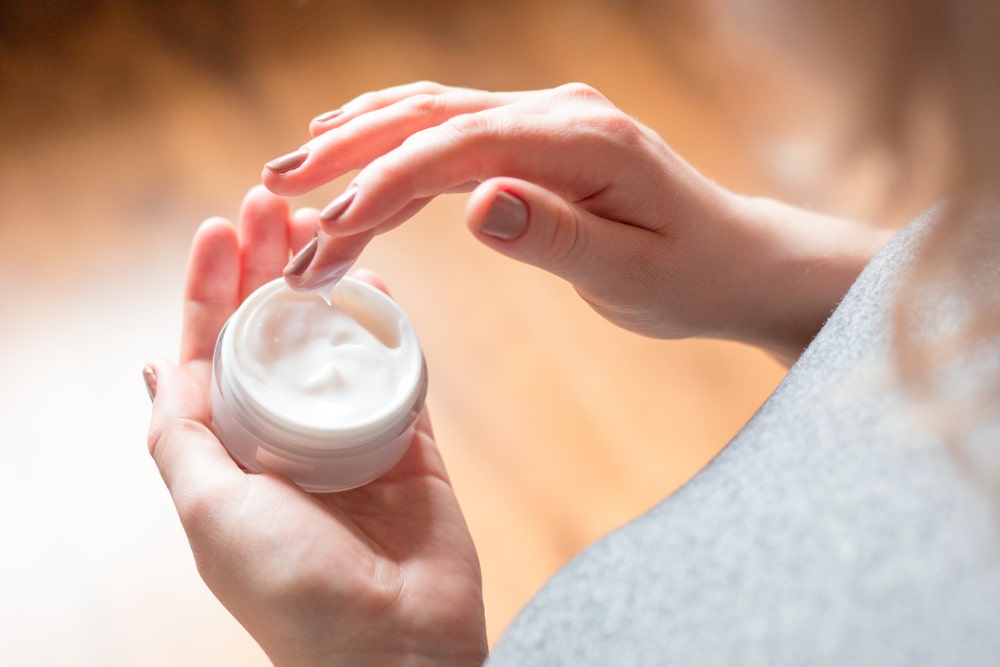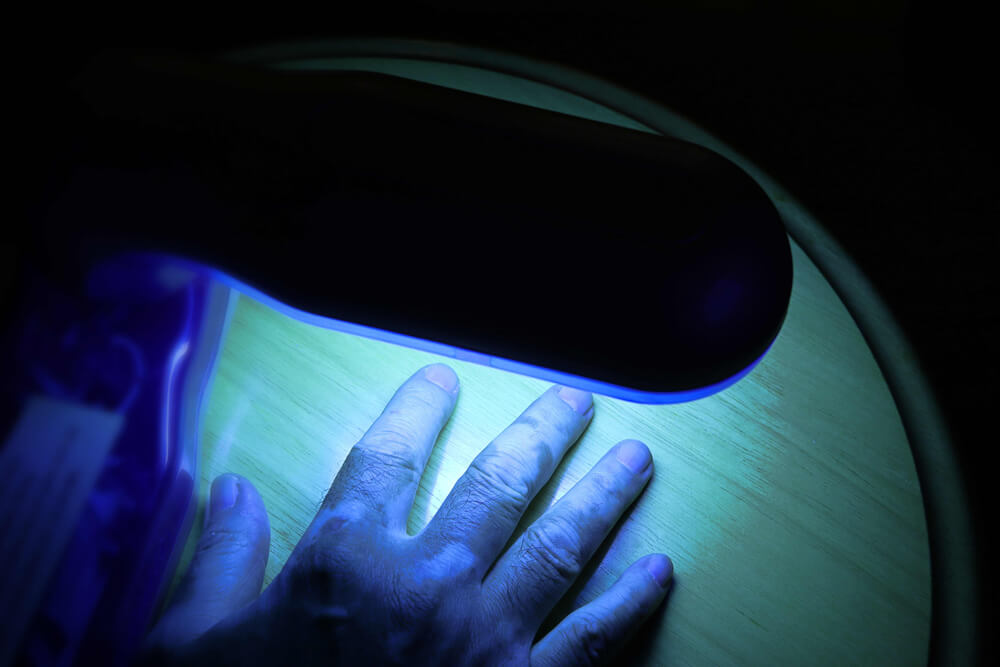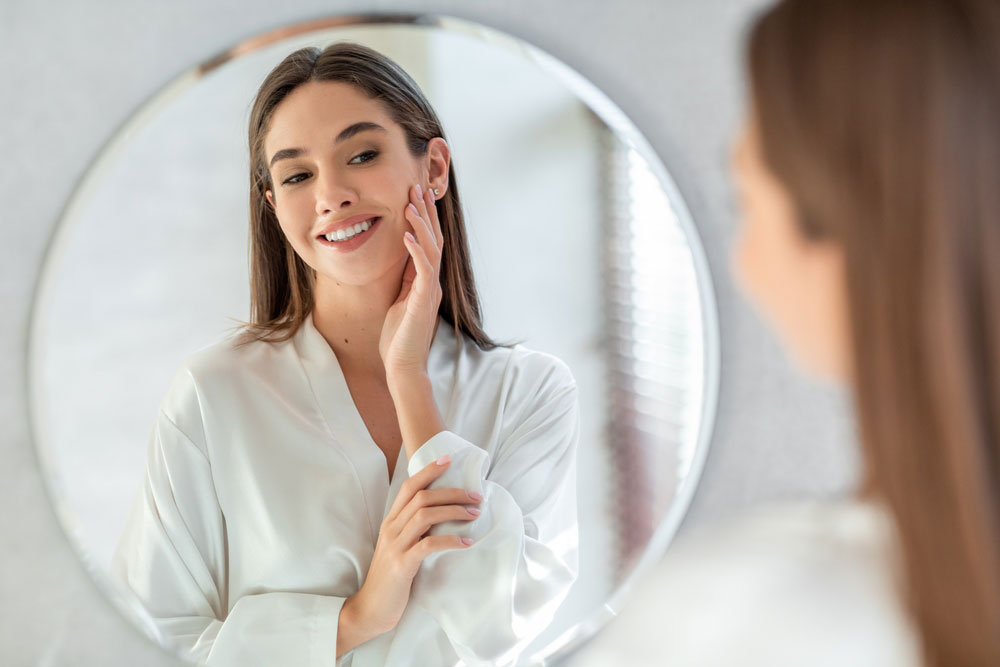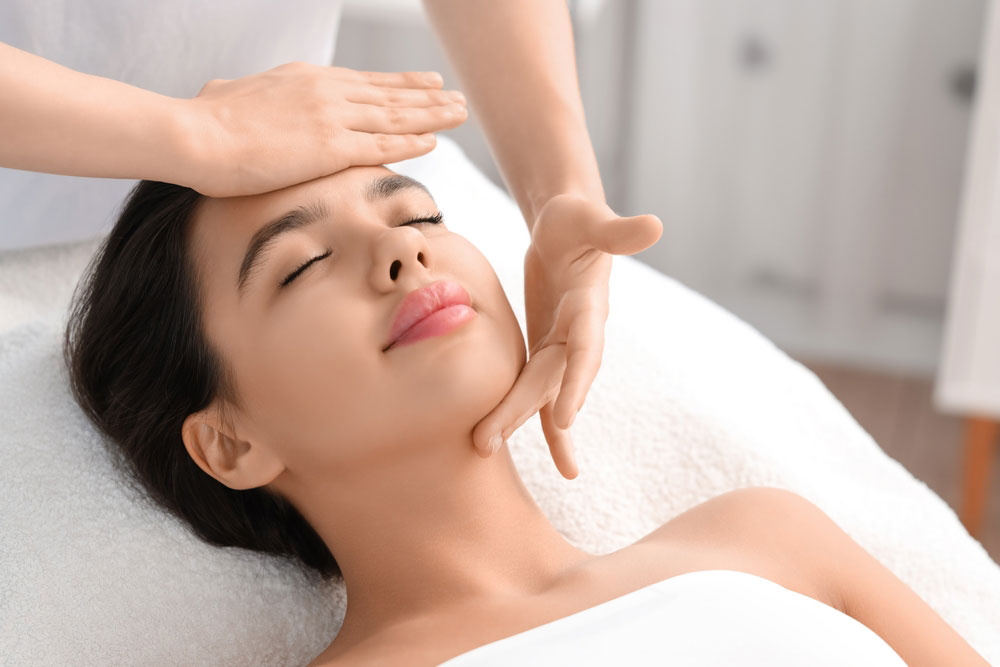There’s a lot to be excited about for the fall season, colorful leaves, fun holidays, and pumpkin picking. However, as we enter autumn and the weather changes, we need to be aware of how our skin reacts to changing temperatures. Weather extremes, both hot and cold, can irritate your skin, aggravating existing skin conditions and causing new ones to emerge. Although the fall is much milder than winters in many parts of the country, fall in New York is often dynamic and unpredictable. During this time, these common skin changes emerge:
- Dryness
- Dullness
- Hyperpigmentation
- Irritation
- Sensitivity
This is because, compared to the summer, there is less moisture in the air and the use of heaters dries out the air even more. When the skin begins to lose moisture from dry conditions and its protective barriers, it increases in sensitivity, dryness, and irritation. Therefore, switching up your skincare routine for fall isn’t just fashionable; it’s essential for maintaining a healthy and happy skin year round. Here, we will share a few skincare tweaks you can make to fortify your skin against the cooler temperatures and drier air.
When should I change my skincare routine to be fall-friendly?
The transition from summer to fall is gradual. As the autumn season in New York approaches, you may notice that it gets darker earlier in the day. You may also notice cooler weather, prompting you to put on more layers to keep warm. These are some early warning signs that it’s time to update your skincare routine to prepare for the changing fall weather.
What effect does fall weather have on skin health?
Fall weather varies depending on where you live.
The following are some of the ways that fall weather in New York affects the skin:
- Cooler temperatures make skin more prone to dryness and dehydration.
- Weather conditions such as wind and rain aggravate sensitive and reactive skin. Skin irritation, redness, and inflammation may worsen.
- The myth that you don’t need sunscreen during the cooler months may increase your risk of sunburn and other negative effects from sun exposure.
- Low humidity levels can aggravate skin conditions such as eczema.
- Dry weather causes the skin to produce more sebum, which leads to more breakouts.
Fall skin care tips for New York
With these fall skin care tips, you can enjoy some of the best weather of the year while also protecting your skin:
1. Moisturize Correctly
In the fall and winter, your skin becomes dry and tight, so it is important to moisturize frequently with the right product. If you have sensitive skin or conditions like psoriasis or eczema, you may experience a burning sensation or become overly sensitive during the seasonal transition. You should hydrate and coat your skin with essential oils, serums, and creams. For the best results, look for ingredients like hyaluronic acid and glycerin, and make sure to moisturize your entire body for healthy-looking skin from head to toe.
Skincare companies like Skinbetter Science and SkinCeutical offer a variety of products that not only moisturize the skin, but are clinically proven to improve the skin’s appearance. Catch two birds with one stone; moisturize and correct your complexion with one product!
Skinbetter Science’s Trio Rebalancing Moisture Treatment or SkinCeuticals’ Triple Lipid Restore 2:4:2 are great moisturizers that can hydrate your skin during the dry season, and improve your complexion at the same time.
While it is critical to keep your skin hydrated, it may be possible that you are using too much moisturizer. Using an excessive amount of creams and lotions can make your skin oily and clog your pores. If this describes you, consider using a moisturizing spray or mist for lighter coverage.
Don’t forget about your lips and eyes! It is important to add a lip moisturizer, like the Aquaphor Lip Protectant Stick, and an eye cream during the colder months as well. These are areas that react sensitively to the sudden change in weather, and should be protected.
2. Reduce Use Of Exfoliants And Retinoids
You should also reduce the use of exfoliants and retinoids during the colder season. These products can exacerbate underlying dryness, leading to irritation, redness, and scaling.
3. Vitamin C
Vitamin C serves a dual purpose in the colder months by combating SPF rays that aren’t fully blocked by your sunscreen, says a board-certified dermatologist in New York City. It also smoothes out hyperpigmentation, which promotes collagen production and results in a more radiant complexion. Some of our products have vitamin C included as one of their main ingredients, like the SkinCeuticals Phloretin CF Gel. In addition to skincare products, you can also take vitamin supplements to ensure a well balanced nutrient level from within.
4. Don’t Forget Sunscreen
Just because you’re no longer going to the beach doesn’t mean you should stop wearing sunscreen. A broad-spectrum 30 SPF sunblock should be part of your year-round skincare routine, not just in the summer. Although your antioxidant serums will protect you from environmental influences, it is important to layer the antioxidants with a sunscreen for better protection. Skinbetter Science’s Sunbetter Sheer SPF 56 Sunscreen Stick and Skinceuticals’ Daily UV Defense sunscreens are both non-oily and white-cast-free, making it easy for you to apply on top of your skincare.
5. Use A Gentle Soap
Using soaps with harsh chemical ingredients can aggravate the dry or sensitive skin in the cooler months. Dry, flaky skin can eventually lead to an overabundance of dead skin cells, which can clog your pores and cause acne to form or worsen. Acne can also be exacerbated by the use of thicker, more intense moisturizers and lotions. Wash your face twice a day with a mild soap that will not dry out your skin. Switch to a soap with mild ingredients to gently cleanse the skin and reduce its sensitivity.
6. Use A Humidifier
While keeping your skin out of the cold is a good idea, artificial indoor heat can be just as bad for your skin. Most modern homes and businesses rely on central heating systems that extract moisture from the air. To keep the air in your home from becoming too dry, skin care experts recommend investing in a small bedroom humidifier.
7. Avoid Heated Water
When it’s cold outside, there’s nothing better than coming home and soaking in a hot tub or taking a hot shower. While these activities are enjoyable, they are not necessarily beneficial to your skin.
Hot water, like sunburn, causes skin inflammation and disrupts the skin’s natural oil production. It is recommended to take shorter and cooler showers to prevent this. Furthermore, when you get out of the tub or shower, be sure to pat your skin dry with a towel rather than rubbing it. This helps your skin retain moisture and avoid irritation by preventing excessive exfoliation.
8. Eat Healthily:
Some of the most pleasant fall traditions can lead to extremely bad eating habits. Tailgating, trick-or-treating, and other holiday activities can increase consumption of processed foods, such as:
- Bread
- Casseroles
- Hot dogs
- Chips
- Sugary treats
Foods high in refined carbohydrates and those with a high glycemic index can cause sugar and hormone levels to spike, promoting acne and other skin conditions. Combat this by eating whole foods and limiting your daily sugar intake.
9. Drink A Lot Of Water:
Don’t forget to drink plenty of water! While there are many different opinions on how much water you should drink each day, four to six cups is a good rule of thumb for people who are generally healthy. If you take certain medications or exercise frequently, your dermatologist may advise you to drink more water. If you find it difficult to remember to drink water, you can still stay hydrated by including hydrating foods in your diet. Cucumbers, lettuce, watermelon, and strawberries all have high water and low sugar content.
10. Dress For The Weather:
Long sleeves, scarves, and gloves can help protect your skin from drying elements as the weather gets colder. Also, remember that the sun is still dangerous even during the cooler months. Wearing sun-protective clothing shields your skin from harmful UV rays. In general, polyester, nylon, wool, silk, and denim provide the most UV protection, and darker-colored fabrics absorb more UV rays than lighter colors.
11. Try Brightening Treatments:
If your skin is already looking dull and rough, it’s not too late to make a change. The following skincare treatments are recommended by dermatologists:
- SkinCeuticals TCA Peel:
- The SkinCeuticals smart TCA Peel is a non-invasive chemical peel that shrinks pores and reduces the appearance of fine lines and hyperpigmentation. Trichloroacetic Acid (TCA) is identified as the criterion component in chemical peeling because it is a tried-and-true acid that dermatologists have used for centuries.
- The Smart TCA Peel is suitable for all skin types and skin colors and contains a 15% Trichloroacetic Acid and 3% Glycolic Acid mixture.
- You can quickly return to your regular activities with little to no downtime. Because this peel is so gentle, you can have it done the day before a big event!
- Microdermabrasion:
- By exfoliating the skin with tiny crystals, microdermabrasion gently removes dead skin cells, revealing the soft and bright skin beneath.
- If you have any unwanted summer sun damage, microdermabrasion is a quick and easy way to restore the tone and texture of your skin.
- If you decide to get one of these spa treatments, make sure it’s done by a licensed medical professional.
Contact Borealis Dermatology to schedule an appointment with Dr. Arora and his team, if you need an evaluation or are suffering from seasonal skin flares. Borealis Dermatology offers two convenient locations to provide various treatments for our patients in the Queens and Long Island areas. You can experience the highest medical and aesthetic expertise available through our treatment options by visiting our clinic.







